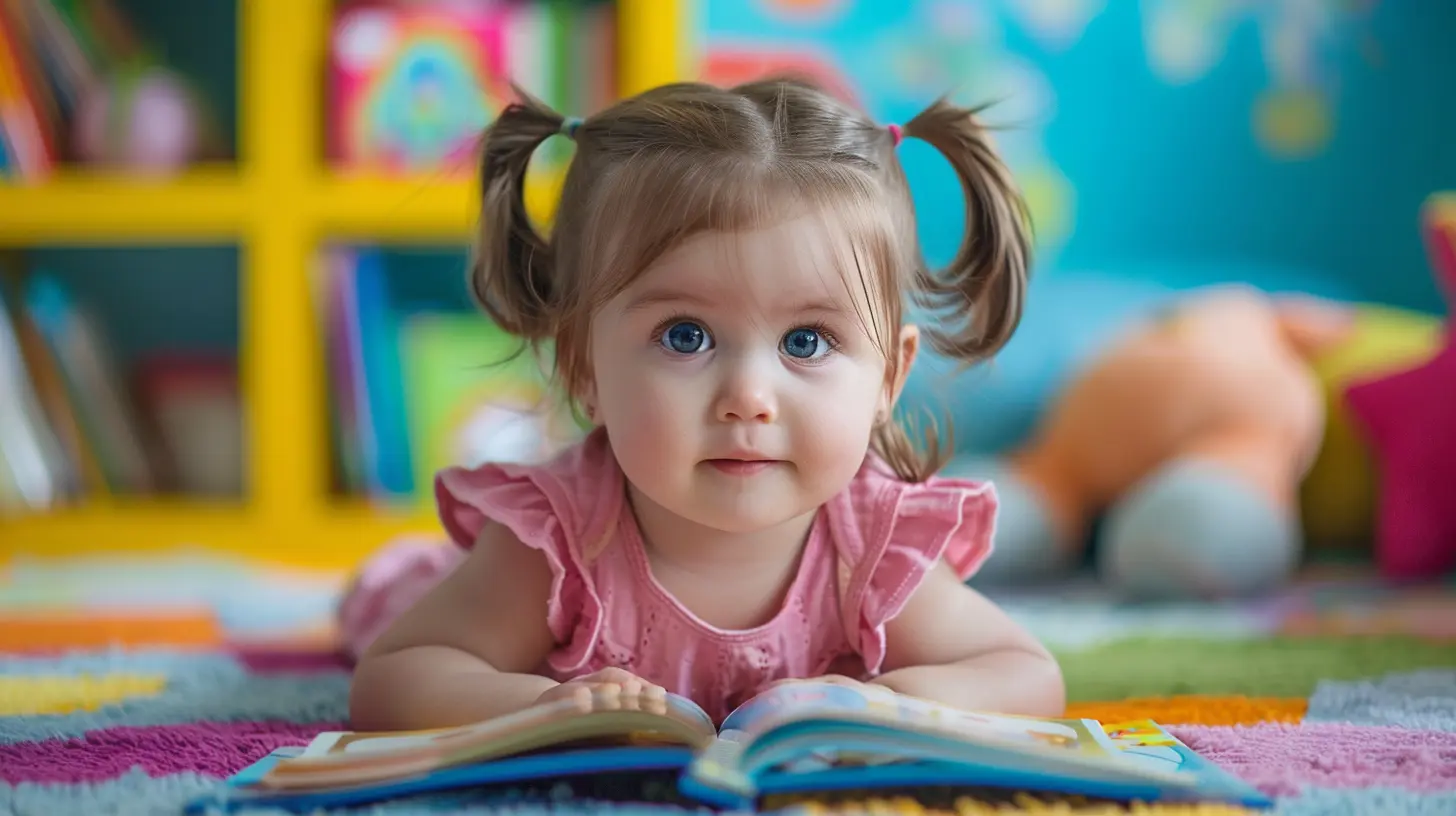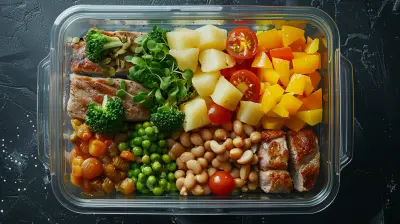Building a Healthy Sleep Routine for Preschool-Aged Kids
14 July 2025
Ever feel like bedtime turns into a circus act at your house? You’re not alone. Those precious preschool years — full of wonder, tantrums, giggles, and growth — often come with one major challenge: getting quality sleep. And let's be real, when your kid doesn’t sleep, neither do you.
So, the million-dollar question: How do you build a sleep routine for a preschooler that actually works?
Good news — it’s not rocket science, but it is a blend of consistency, patience, and perhaps a little magic. Today we’re diving into the mysterious world of toddler sleep patterns, how to tame them, and why building a solid routine now can lead to lifetime benefits (for both of you).
Why Preschoolers and Sleep Are a Tricky Combo
Preschool-aged kids (we’re talking about ages 3 to 5 here) are at a fascinating developmental stage. Their brains are buzzing non-stop. They're learning to speak in full sentences, ask a million “why” questions before breakfast, and yes — they’re becoming fiercely independent.All this growth takes energy — and not just physical. Emotional development plays a huge part. Every day feels like a rollercoaster, which means winding down at night is often the most challenging part of the day.
And let's not forget fears of the dark, nightmares, or the classic "just one more story!" bedtime delay tactic. Building a solid sleep routine isn't just about getting your kid tucked in — it's about giving them a safe place to rest, both physically and emotionally.
How Much Sleep Does a Preschooler Actually Need?
Before we talk strategy, let’s lay down the facts.According to pediatric experts, preschool-aged kids need around 10 to 13 hours of sleep in a 24-hour period. This usually includes nighttime sleep plus an afternoon nap (if they're still taking one).
But here’s the kicker — it’s not just about the quantity of sleep. Quality matters just as much. Poor sleep patterns can lead to:
- Mood swings
- Trouble focusing
- Hyperactivity
- Behavioral issues
Sound familiar? Yeah, many of these mirror symptoms of ADHD — which is why sleep is so critical during this phase.
The Anatomy of a Successful Kids’ Sleep Routine
Think of a successful bedtime routine like baking a cake. Miss an ingredient, and you’re left with a gooey mess. Follow the steps right, and voilà — magic.Here’s what makes up a successful sleep routine:
1. Consistency is King
This is rule #1. Your preschooler's brain craves pattern and routine. Going to bed at 8 p.m. one night and 10:30 p.m. the next? Recipe for chaos.Try to:
- Stick to the same bedtime and wake-up time daily — even on weekends
- Include the same series of steps before bed (bath, story, cuddle, etc.)
- Keep wake-up time consistent, too (even if they stayed up late)
The more predictable bedtime is, the more secure and calm your child will feel.
2. Wind Down, Don’t Speed Up
Your child can’t go from 60 to zero like a car screeching into a parking spot. They need a gradual shift from high energy to sleepy vibes. Create a "wind-down window" of at least 30–45 minutes before lights out.Some calming pre-bedtime activities:
- A warm bath
- Reading a mellow story (save the wild pirate tales for daytime)
- Gentle music or sound machines
- Cuddle time or quiet talking about their day
3. Dim the Lights, Ditch the Screens
Light, especially blue light from screens, signals to the brain that it’s time to be alert. Not exactly what we want at 8 p.m.Tips:
- Turn off tablets, TVs, and phones at least 1 hour before bed
- Dim house lights after dinner to signal winding down
- Try blackout curtains if your child wakes up too early with the sun
4. Set Up a Sleep-Friendly Environment
Imagine trying to sleep in a cluttered room with blinking lights, background noise, and an uncomfortable bed. Yikes.Your child’s sleep space should be:
- Dark (use nightlights if needed)
- Quiet (or use white noise machines if they're light sleepers)
- Cool (temp around 65 to 70°F)
- Safe and cozy (no loose blankets or stuffed animals if under 3)
Let them help pick out sheets or a stuffed buddy — this simple act gives them a sense of ownership and comfort.
The Bedtime Routine Blueprint (That Actually Works)
Let’s get practical. Here’s a simple routine you can tweak to fit your family:7:00 p.m. – Playtime ends, start soft background music
7:15 p.m. – Bath time
7:30 p.m. – Pajamas, brush teeth
7:45 p.m. – Choose 1–2 books to read together
8:00 p.m. – Lights out, soft music or nightlight on, say goodnight
No frills. No drama. Just rhythm.
If your child is resistant at first, don’t worry. That’s totally normal. Stick to it, and you’ll see the shift within a few weeks.
What If They Fight Sleep?
Ah yes, the classic battles: stalling, screaming, sneaking out of bed a dozen times.Here’s a toolkit of tactics:
1. Use Sleep Cues
Verbal cues like “It’s almost bedtime!” help set expectations. Repeating the same phrases each night makes them familiar and comforting.2. Offer Choices (With Limits)
Let your child choose between two PJs or pick the bedtime story — it gives them a sense of control but within your framework.3. Create a Sleep Chart
Get crafty. Make a ‘Bedtime Star Chart’ where they earn a sticker each time they follow the routine.Reward after a full week? A special toy, outing, or treat. Motivation is key!
4. Stay Calm but Firm
They’ll test boundaries, so you’ll need to hold the line. It’s tempting to cave — but being consistent sends the message that bedtime isn’t up for negotiation.The Nap-Time Conundrum
Some preschoolers still need naps; others start phasing them out around age 4 or 5. How do you know?Signs they’re ready to ditch the nap:
- Taking forever to fall asleep at nap time
- Staying up too late at night
- Waking up super early
If you’re in nap transition mode:
- Replace nap time with quiet time (books, puzzles, relaxing activities)
- Keep it at the same time every day
- Slowly shorten the nap until it fizzles out naturally
Nap or no nap, you still need that consistent bedtime routine.
When Should You Be Concerned?
Occasional sleep hiccups? Totally normal.But some red flags warrant a chat with your pediatrician:
- Snoring or breathing pauses during sleep
- Frequent night terrors or sleepwalking
- Trouble falling asleep despite routine
- Daytime sleepiness or behavioral issues
Trust your gut — if something feels “off,” it’s worth checking out.
The Hidden Benefits of a Solid Sleep Routine
Besides the obvious (you know… sanity and less coffee), a healthy sleep routine has long-lasting perks:- Supports brain development
- Boosts immune system
- Improves learning and focus
- Creates emotional stability
- Strengthens your bond through nightly rituals
Sleep is like fuel — the better the quality, the smoother the ride.
Making Sleep Sacred: For Them and For You
The truth? Bedtime can either be a nightly battlefield or a blissful winding down of your day — it all hinges on the habits you build now.Don’t expect perfection. You’ll have off nights, skipped naps, surprise wake-ups at 3 a.m. (probably to ask why the moon follows them… yes, that’s a thing).
But if you stay the course, adjust with their needs, and keep the routine sacred, your preschooler will learn to embrace rest — and you’ll all be better for it.
So tonight, dim the lights, grab that bedtime story, and remember — you’re building more than a routine. You’re building connection, comfort, and calm.
And maybe, just maybe… an earlier bedtime for you too.
all images in this post were generated using AI tools
Category:
Parenting PreschoolersAuthor:

Liam Huffman
Discussion
rate this article
1 comments
Amber McElveen
Establishing a consistent sleep routine nurtures security and well-being, fostering healthier development and happier mornings for both parents and kids.
July 26, 2025 at 4:21 PM

Liam Huffman
Absolutely! A consistent sleep routine not only benefits children's development but also creates a calmer environment for the whole family.


